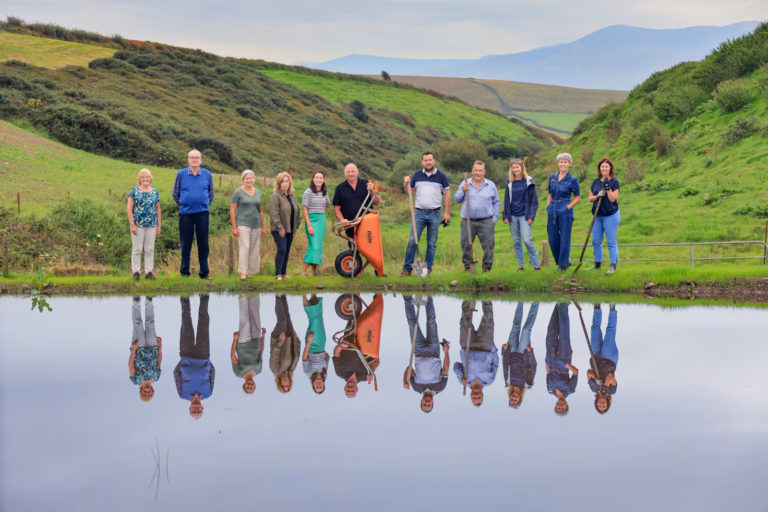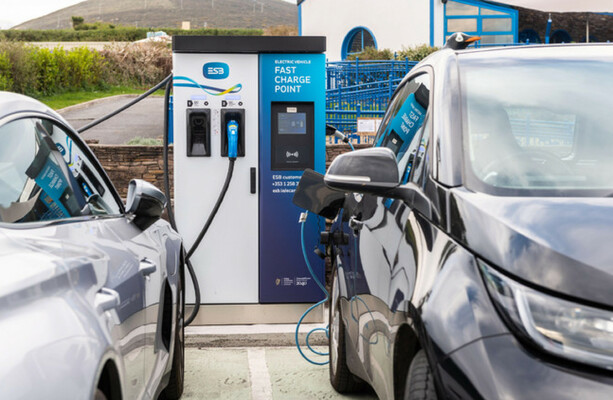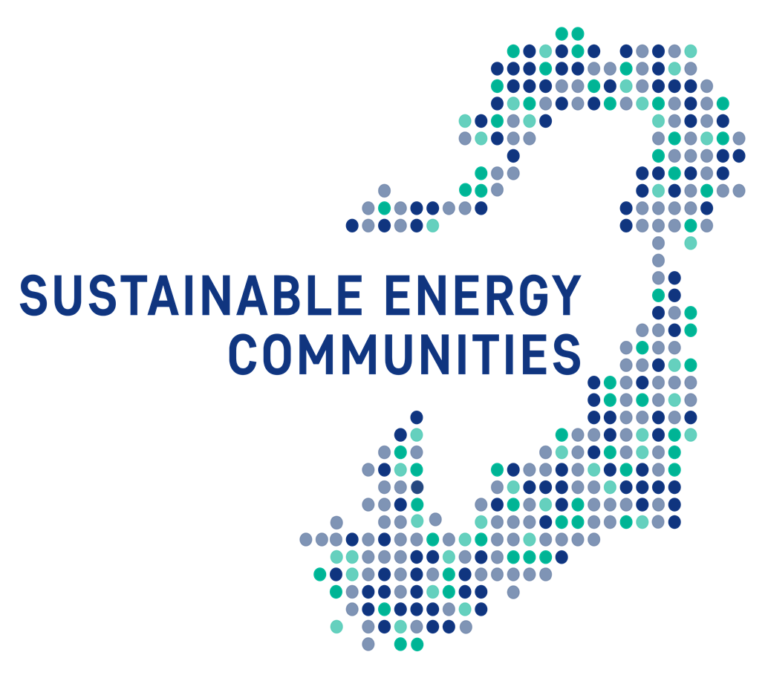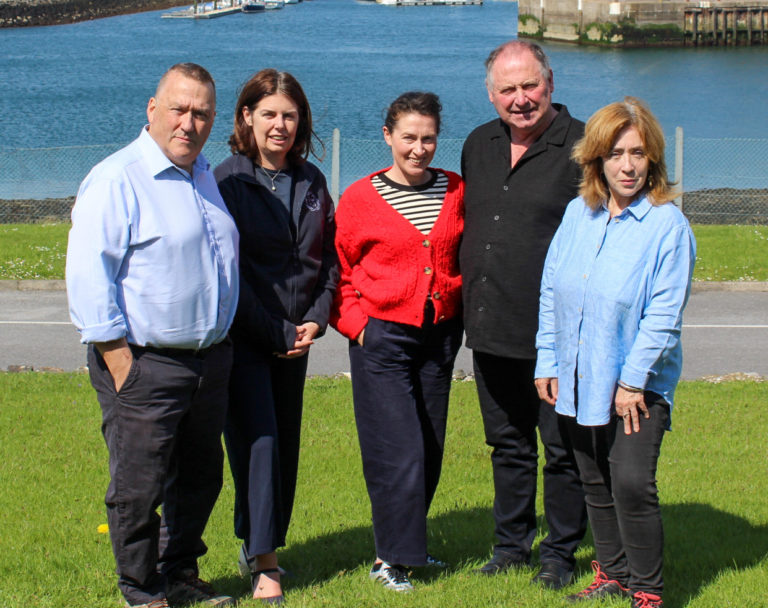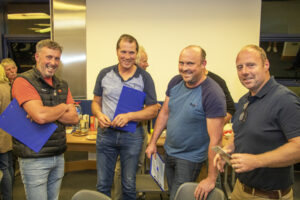
Tháinig baill Phobail Fuinnimh Inmharthana Feirmeoirí Déiríochta Chorca Dhuibhne (PFIFDCD) le chéile chun cloisint faoi chonas go bhfuil anailís déanta ar a gcuid úsáid fuinnimh, agus cad iad na céimeanna a d’fhéadfaidis a thógaint chun a bheith níos
éifeachtaí timpeall ar chúrsaí fuinnimh. Bhí an grúpa tar éis Máistirphlean Fuinnimh a choimisiúnú chun féachaint ar a gcleachtais fuinnimh reatha agus, ón anailís seo, chun slite le bheith níos éifeachtaí ó thaobh fuinnimh a aithint.
[Is céim thosaigh riachtanach é MPF d’aon Phobal Fuinnimh Inmharthana (PFI) chun a úsáid fuinnimh tosaigh a ríomh.] Ag cruinniú ginearálta a tionóladh sa Daingean, chuala an grúpa na príomh-thorthaí agus moltaí seo a leanas:
- Sa bhliain 2019, d’úsáid an pobal feirmeoireachta seo fuinneamh de níos mó ná 10,000Mwh (ag giniúint 2,900 tonna de CO2) le costas de timpeall €1 milliún.
- Déanfaidh teicneolaíocht ar nós painéil gréine laghdú ar chostas fuinnimh sa chás is

More attendees at West Kerry Dairy Farmers Sustainable Energy Community (WKDFSEC) get together in Dingle go mbíonn an méadar roinnte idir an parlús bainne agus an tigh cónaithe.
- D’fhéadfadh córais athghabhála teasa i bparlúis bhainne níos mó ná leath a bhaint de chostas reatha fuinnimh maidir le huisce a théamh, rud a bheadh ina chúis le sábháil airgid de bhreis agus €800 sa bhliain.
- Is é díosal talmhaíochta an saghas fuinnimh is mó a úsáidtear (52%), le costas de timpeall €750,000. (dá ndéanfaí bithmheatán a mhalartú ar dhíosal, bheadh deis suntasach margaidh ann).
- D’fhéadfadh iarfheistiú ar thithe cónaithe feirme go B2 laghdú de 1,400 Mwh a chur ar úsáid leictreachais agus laghdú de 360 tonnaa chur ar ghiniúint CO2.
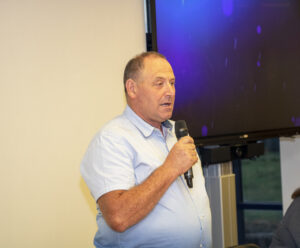
Members of West Kerry Dairy Farmers Sustainable Energy Community (WKDFSEC) came together in Dingle at the end of August to hear how their use of energy has been analysed and to see what steps they can take to become more energy efficient. The group had commissioned an Energy Master Plan (EMP) to calculate their existing energy practices and from this analysis, identify ways to become more energy efficient.
[An EMP is an essential first step of any Sustainable Energy Community (SEC) to baseline their usage.] At a general meeting held in Dingle, the group heard these key findings and recommendations:
- In 2019, this farming community used energy of over 10,000 MWh (generating 2,900 tonnes of CO2) and costing circa €1 million.
- Technology such as Solar PV panels will reduce energy costs, where the meter between the dairy parlour and the domestic dwelling is shared.
- Heat Recovery systems used in a dairy parlour could lead to more than halving the energy required for heating water, leading to potential savings of over €800 per annum.
- Agricultural diesel is the single biggest energy consumer (52%) and costing circa €750,000. (If biomethane could be substituted for diesel, there is a substantial market opportunity.)
- Retrofitting of farm dwelling houses to B2 could reduce energy usage by 1,400 MWh and 360 tonnes of CO2
The next step on the farmers’ roadmap is holding over individual surveys of farms to understand each dairy farm’s unique aspects and quantify their actual energy use to decide which climate action activities are best suited to becoming more energy efficient. Further funding has been secured by WKDFSEC from SEAI and Kerry Agribusiness to begin this work as soon as possible.
Chair of the WKDFSEC is Dinny Galvin who formed the group and has inspired farmers near and far to take his lead. He said:
“This group of more than a hundred dairy farmers in Corca Dhuibhne is beyond eager to take the next steps for their farms and for the environment. We have achieved a lot already with this Energy Master Plan – it shows us where we are and how we can move to take climate action. I have seen on my own farm that many of these activities are low-hanging fruit but they make a strong impact on energy efficiency and farm finances.”
He applauded Kerry Agribusiness and SEAI for their commitment to supporting the dairy farmers of Corca Dhuibhne.

